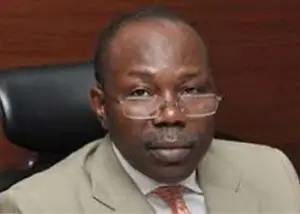Secondly, social cohesion. Veterans are bridges between the state and the citizens in volatile communities.
They can mentor at-risk youths, organize neighborhood vigilance ethically, and model non-violent conflict resolution, roles that wither if poverty and bitterness prevail.
Thirdly, historical continuity. Nations are stories we agree to tell together. Veterans carry living archives, lessons from campaigns, doctrines refined through hardship, and cautionary tales about political adventurism.
If we let those stories die in penury, we amputate our institutional memory. The current operational regime for their care suffers many afflictions, amongst which are fragmented governance, data poverty and weak enforcement. Veteran affairs are spread across ministries, boards, and military formations with overlapping mandates and blurred accountability.
In such fragmentation, no single entity is fully answerable for outcomes, and problems fall through institutional cracks. Accurate, up-to-date rosters of retirees, their health needs, dependents, and locations are often incomplete.
Without reliable data, budgeting is guesswork and targeting is crude. Even when entitlements are clear on paper, enforcing timelines, penalizing bottlenecks, and auditing leakages remain inadequate.
The principle of “pay the soldier first” is not yet embedded. This is in spite of the fact that the country has made fitful strides in terms of digitization of records, periodic pension reviews, attempts at veteran databases, sporadic health coverage improvements. Yet these structural gaps persist. What then is the way forward? A credible response to the plight of retired officers must be comprehensive, measurable, and insulated from political mood swings.
The following pillars offer a practical roadmap: The country needs to create or empower a single statutory body with end-to-end responsibility for veterans’ welfare: pensions, healthcare, housing, employment, and memorialization.
It should integrate databases with the services, revenue authorities, and national ID systems; publish service standards; and be subject to independent audits. Its leadership must include veterans and health finance experts, not merely career bureaucrats.
The country must enshrine in law a 30-day pension payment rule with automatic interest penalties for delays that are borne by defaulting agencies’ officials, not by the treasury. Mandate quarterly public dashboards showing on-time payment rates, arrears stock, and resolution times.
What gets measured gets done.
Beyond the perfunctory provision that covers virtually nothing in point of the heath needs of the retired military personnel, there is urgent need to enroll all retired officers and their eligible dependents in a veteran-tier health plan that covers primary care, chronic disease management, essential surgeries, prosthetics, and mental health. This obtains in other large public corporations and private establishments.
Link service hospitals to a referral network of accredited civilian facilities nationwide. Fund this through a dedicated line item, complemented by a modest defense surcharge on select luxury goods and ring-fenced sin taxes. Telemedicine can extend reach to rural veterans; mobile clinics can conduct quarterly outreaches for screenings.
In addition, we need to institutionalize pre-retirement psychological debriefs and post-retirement check-ins at 6, 12, and 24 months. Train peer counselors among retirees; set up 24/7 confidential helplines staffed by clinicians conversant with military culture. Normalize care by integrating mental-health services into routine checkups with no separate queue that stigmatizes.
To cater for their housing needs, we must scale up veteran-specific mortgage products with longer tenors, lower rates, and credit guarantees. Prioritize retirees for serviced plots in new federal and state layouts; provide legal aid to resolve title disputes.
Partnerships with credible private developers can deliver affordable, standardized designs, while cooperatives manage maintenance to preserve value. I often wonder what the various military propertycompanies are doing with their assets.
This is another pandora box that I do not intend to deal with herein but in the nearest future. It is suggested that the country launches a Veterans Skills Translation Programme that maps military competencies to civilian certifications: Logistics to supply-chain credentials, signals to ICT and cybersecurity, engineering to facilities management, medical corps to community health.
On the strength of this, we then offer short, intensive bridge courses with recognized certificates; incentivize private employers via tax credits for veteran hires and apprenticeships. Then encourage veteran-owned SMEs with preferential access to public procurement quotas and prompt payments. All these can be coordinated by the Armed Forces Resettlement Centre in Oshodi and other parts of the country towards enhancing its capability.
Towards memorialization and civic integration, the country can build local memorial spaces in form of small, living museums and libraries in divisional headquarters where veterans can tell their stories to students, conduct leadership clinics, and curate oral histories.
This symbolic respect reinforces material reform and is essentially necessary. Finally, the country must commission longitudinal studies on veteran outcomes in terms of health, income, family stability to guide policy iteration.
We then publish anonymized datasets for researchers which validates the fact that evidencebeats guesswork. To actualize the foregoing, although defense is a federal preserve, these retired personnel served all Nigerians that constitute the polity.
Hence, the question of bifurcation is immaterial in this regard. This implies that states can lead in practical ways: co-funding health schemes, allocating land, waiving local fees, and integrating veterans into community policing advisory councils. The private sector’s role on the other hand is twofold: employment and philanthropy.
Corporations benefit from veterans’ discipline and leadership; formal veteran recruitment pipelines should be part of corporate governance scorecards. Meanwhile, foundations can fund mental health innovation, scholarships for veterans’ children, and entrepreneurship accelerators.
Civil society and faith-based organizations, long present in the welfare space, should add a veteran lens to their programs, financial literacy workshops near cantonments, caregiving support groups for spouses, and legal aid clinics for pension disputes. Media houses can equally commit to an annual “Veterans Accountability Index,” ranking agencies by service delivery.
At this juncture, the question is not whether we can afford to care for veterans but whether we can afford not to. Consider the hidden costs of neglect: emergency hospitalizations from unmanaged chronic diseases, social disorder when trained but disaffected men become instruments in local conflicts, the recruitment crisis when service members see that loyalty is a one-way street. Smart investment reduces downstream costs. Moreover, ring-fencing funds, cutting duplication, and auditing leakages will often save money.
In a country like United States of America, benefits of veterans range from general pensions for the veterans or their survivors.
The special pension is accruable to surviving spouses who has not remarried or unmarried dependent of a deceased veteran.
There is also provision for disability payments for veterans who suffer, or sustain aggravated injury or disease while on active service. Where the injury is severe, extra money is made available. There is equally financial aid for education where such veterans are interested in further studies, or towards acquisition of new skills where desirous.
The country also provided Aid and Attendance, as well as housebound benefitsthat cater financially for veterans and surviving spouses who require regular attendance of another person to assist in eating, bathing, dressing and toileting. Community care facilities are established in the immediate communities to serve as an option to bypass waiting for appointments ortravelling a long distance to a facility. With regard to the blind people, or those with impaired vision or even low vision, the blind rehabilitation services exist to cater for them. Also, in existence is what is called State veterans’ homes that provide services such as rehabilitation and skilled nursing, long-term care, residential care and dementia care for those in need.
Telehealth helps the immobile veterans or those in remote areas in accessing routine health care services such as physical therapy and mental health appointments via technology that connects them to specialist in any part of the country.
For the invalid, home hospice care is available to provide comfort and support, particularly where they are at an advanced stage of terminal disease. This brings succour to them at this latter day. To address the challenge of housing, various home loans such as veterans’ home loans which assist members of the military secure mortgage loans to purchase a home is established and funded.
The uniqueness of this is that the facilities grantable are guaranteed as the mortgage is administered through an approved lender. There is no need for extra collateral. Of further interest to me is the special adapted housing grants which offer cash benefits to veterans with certain service-connected disabilities which assist them in buying or remodeling a home to accommodate their mobility needs.
As most of them are still agile and productive, there is the Employment Assistance Programs as well as resources to help them find job. This is usually provided by the States. Even on a less serious note, veterans desirous of adorning special plate numbers to recognize their ties in serviceare also privileged.
All these are just a tip of the iceberg as there exist several countless opportunities to the veterans to the extent of making them never regretting their service to the nation.
At this stage, the point is that we need to keep faith with those who kept faith. Remember when the state deployed them as service men, retired officers did not negotiate conditions on a battlefield. They executed orders under flags they did not choose and in terrain they did not design.
Now, outside the wire, they deserve predictability instead of pleading, systems instead of sympathy, and justice instead of charity. Nations are ultimately judged by how they treat their weakest and their worthiest.
Our veterans are not supplicants; they are creditors to whom the republic owes a debt, both moral and material. The bugle, at last, is quiet. But the duty to keep faith with those who kept faith with us still calls.
Let us answer it with policy that works, budgets that pay, clinics that heal, homes that shelter, and rituals of remembrance that teach our children that service was neither wasted nor forgotten, for if we safeguard the dignity of yesterday’s guardians, we fortify the resolve of today’s and earn the loyalty of those who will stand the watch tomorrow.
This is the least action that we can take and state of emergency must be declared in this regard.








